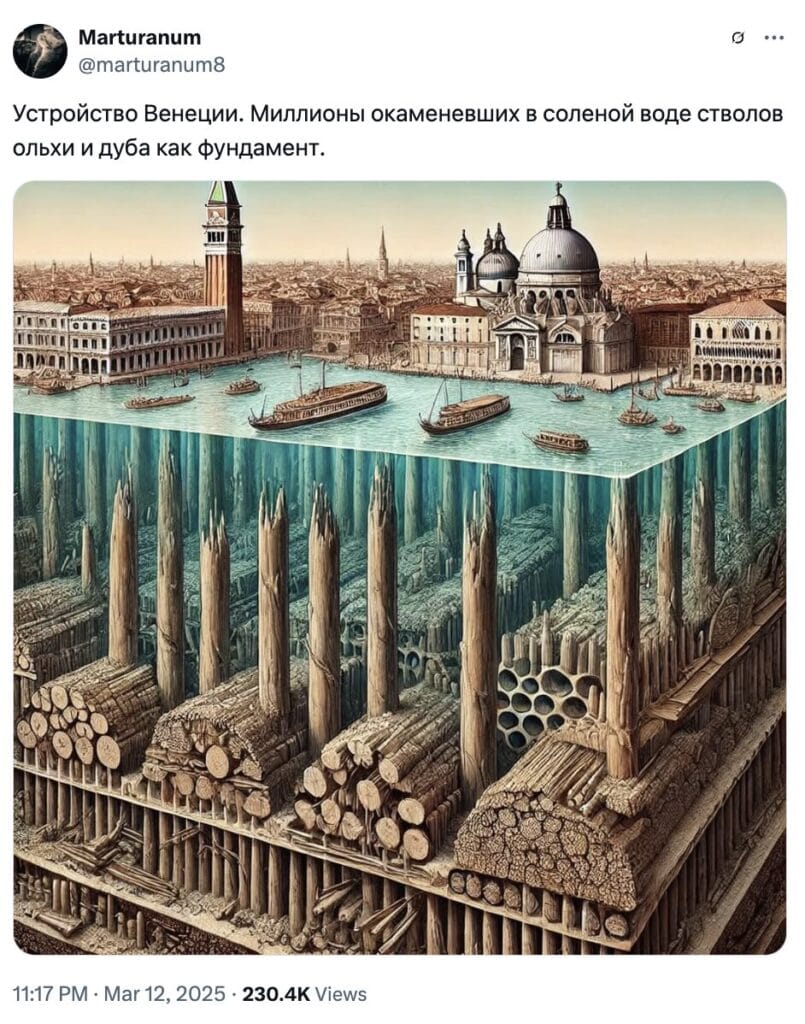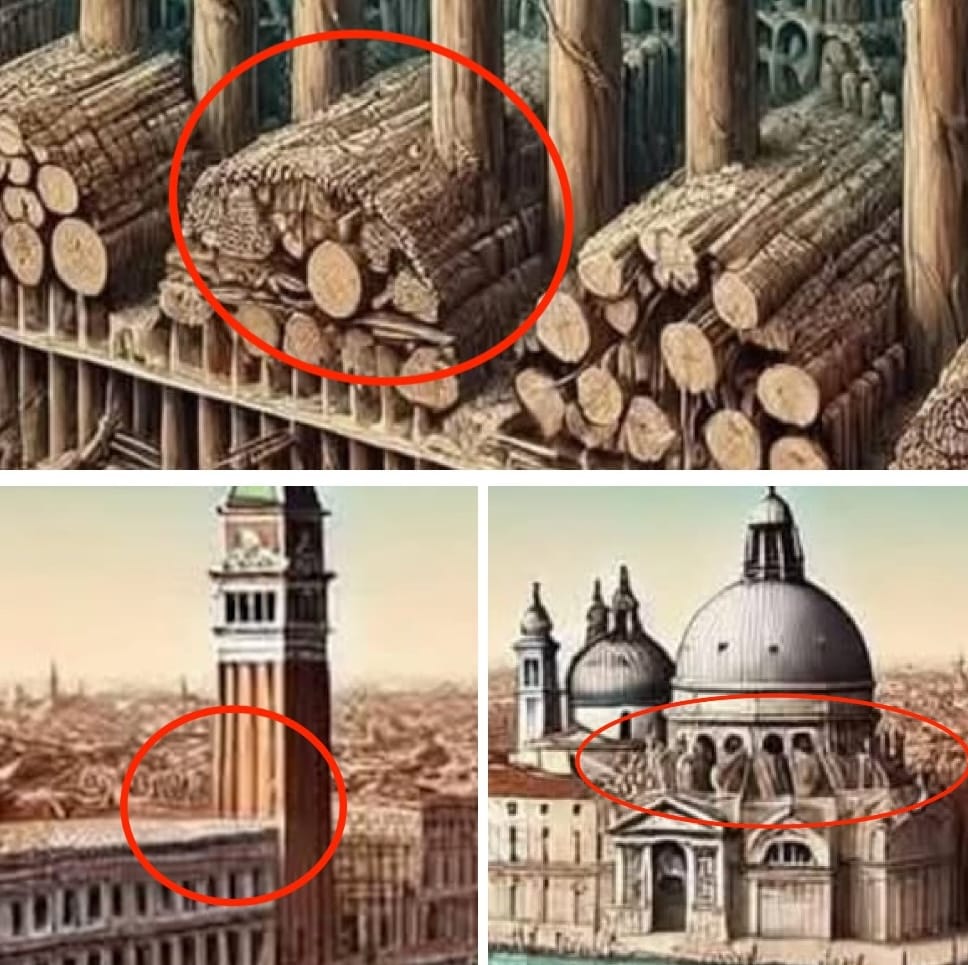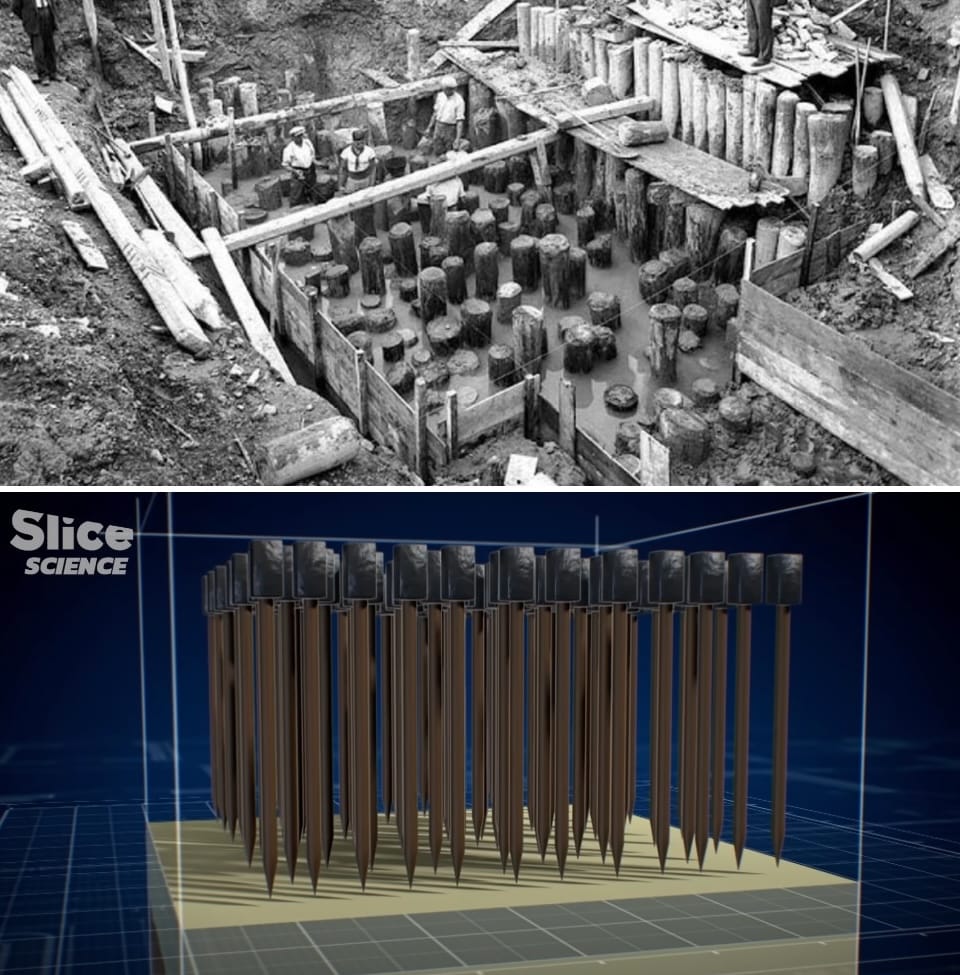Since March 2025, an image has been circulating on social networks, allegedly illustrating the structure of the underwater part of the Italian city. We have verified the authenticity of this picture.
The image was widely circulated online on March 12. It was often accompanied by explanatory text: “Venice: a city floating on a flooded forest. Since 421 AD, Venice has stood on millions of tree trunks stuck into the clay bottom of the lagoon. Not steel or concrete, but mostly alder with a few oak trees support the entire city. In salt water, these wooden pillars petrified over time, becoming hard as stone. <…> Sitting 1.6m below the waterline, this extraordinary feat of medieval engineering continues, 1,500 years later, to support one of the most spectacular cities in the world.” The authors of such posts refer to unnamed architectural studies, historical and archaeological documents from the University of Florida.
Such posts have become especially popular among users Facebook And X, where they received hundreds of thousands of views. There are also publications in Instagram, Threads And Telegram.

Due to the peculiarities of the geographical location of the city, buildings in Venice are really built using an unusual technology: to stabilize the foundation, wooden piles were driven into silt or clay, reaching dense layers of soil. Most often, moisture-resistant wood species were used, such as larch, oak or alder. On top of piles laid stone platforms that served as the basis for buildings. According to common versions, a wooden pile constantly in water not only did not rot, but over time even became stronger. However, some modern research show: wood still decomposes under the influence of anaerobic bacteria, although this happens much more slowly. The exact number of piles on which Venice stands is not known for certain; there is only information on individual buildings. For example, at the base of the Rialto Bridge installed about 14,000 wooden poles.
The viral image shows one of the main attractions of Venice - St. Mark's Square. However, some elements indicate that the picture was created using artificial intelligence or a photo editor. Firstly, in the upper part of the image, where the city itself is located, the building on the right, reminiscent of St. Mark's Cathedral, has a deformed dome. Secondly, the bell tower on the left side of the picture is unnaturally curved. Thirdly, the wooden pillars merge at the bottom.

Such features are typical for images created using artificial intelligence. “Verified” analyzed the viral image using an AI detector from the company Hive. He estimated the probability that the image was created by a neural network at 99.6%. Similar tools produce similar results.

Although Internet users cite scientific papers published by University of Florida staff as the source of the image, it first appeared online only in March 2025. The picture became especially popular in the English-language segment of the social network X, where some tweets received more than a million views. Text of viral posts, probably for the first time published there on March 12, user @pierpi13 in Italian. He illustrated his words with a generated image of Venice. The text of the post was then distributed in translation into other languages, including Russian.
An idea of what the underwater part of Venice actually looks like can be obtained from the surviving archival photographs and numerous documentaries on this topic. Massive wooden posts, immersed in muddy soil, are placed close to each other and thereby form a solid base, reinforced at the edges with boards and supports.

So while Venice is indeed built on hundreds of thousands of wooden piles, the viral image of the city sitting on a submerged pile of logs was generated by artificial intelligence.
Cover photo: social networks
- BBC. Mud, water and wood: The system that kept a 1604-year-old city afloat
- Snopes. AI-generated image supposedly shows underwater foundation of Venice
- Is this photo really a real house in Liege?
- Is this depiction of the Sydney Opera House accurate?
If you find a spelling or grammatical error, please let us know by highlighting the error text and clicking Ctrl+Enter.






